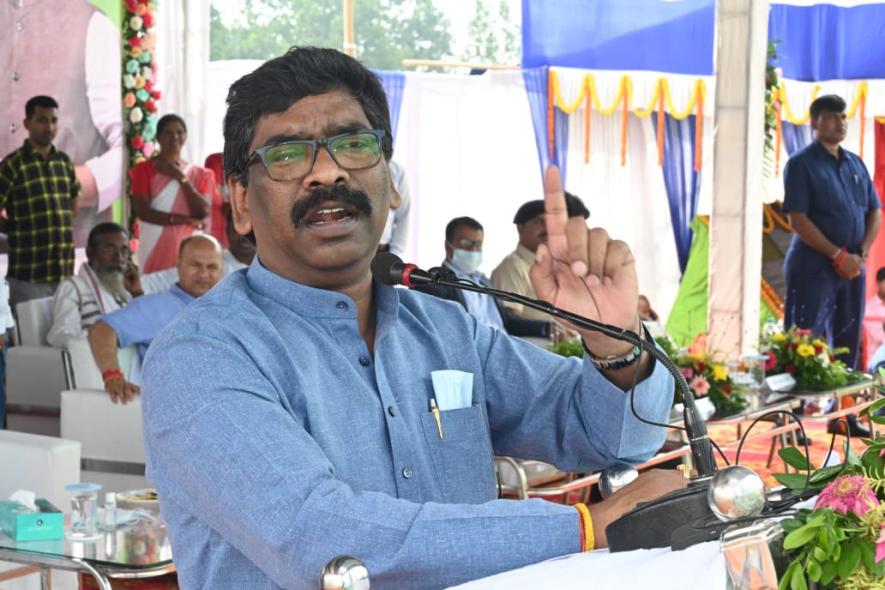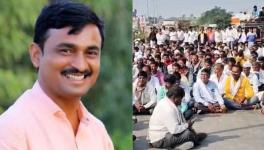Jharkhand’s Fate to Show BJP’s Intention of Empowering Tribals

When results of the fifth Jharkhand Vidhan Sabha election were declared on December 21, 2019, it was clear that voters had made the Bharatiya Janata Party (BJP) pay for its exclusivist politics.
The latest episode in the state, which has put a question mark on the fate of the Jharkhand Mukti Morcha (JMM)-Congress government, especially its chief minister Hemant Soren, will further demonstrate the nature of the BJP’s politics as far as Scheduled Tribes are concerned.
Back in 2019, even though the BJP marked a ‘first’ by governing the state for five years without a break, that too with only Raghubar Das at the helm, voters gave it no ‘incremental’ votes for this achievement.
During the 2019 Assembly election campaign, the BJP highlighted that prior to 2014—when it embarked on providing that unbroken tenure—Jharkhand had nine governments in 14 years since November 2000, when it was carved out of undivided Bihar.
The results demonstrated that voters were not enthused by this accomplishment because the BJP’s seats declined from 37 in 2014 to 25 in 2019. Its vote share, however, remained almost the same—31.26% in 2014 and 33.37% in 2019.
An increase of two per cent of popular votes proved of little consequence because the JMM and the Congress had not just formed an alliance but also included the much smaller Rashtriya Janata Dal (RJD) in the once-again-strung-together United Progressive Alliance (UPA) in Jharkhand after Shibu Soren’s party and the Grand Old Party parted ways on a bitter note in November 2014.
Collectively, the vote shares of the three parties edged out the BJP marginally by barely two percentage points or so but in terms of seats, the UPA’s tally of 47 was adequate to provide a majority to the coalition.
The JMM-led UPA victory in 2019 meant that the BJP, despite providing a ‘stable’ government for five years, failed to make any fresh inroads—mainly because it earned the dubious tag of being a party of non-tribals in a state which was established to ensure political and economic empowerment of marginalised tribals.
The tribal community has certainly ‘thinned’ demographically—partly because of non-tribal settlers making the tribal lands their home—across the state over decades. Politically too, tribal leaders made little headway for a variety of reasons mainly because they remained unskilled at power politics and not adept at handling financial matters.
The 2011 Census puts the percentage of Jharkhand’s tribal population at 26.3 (many believe that the community’s under-enumeration was a past norm and remained unchanged in 2011 too) but the state’s cultural ethos and its public imagination are undeniably tribal in character.
Although only 28 of the 81 Assembly seats are reserved for tribals, it cannot be ignored that Chhattisgarh as well as Jharkhand were formed in 2000 by the Vajpayee government to fulfil a long-standing demand of tribal groups.
The demand for a separate tribal state was more vocal in Jharkhand than in Chhattisgarh and this explains the reasons for the greater ‘opposition’ to the BJP’s efforts to pitchfork handpicked tribal leaders who were either weak or could be controlled by the leadership and not those who emerged out of tribal movements.
In 2014, when the BJP along with its alliance partner All Jharkhand Students Union secured a majority and alongside more than doubled its seats from 18 in 2009, it decided to nominate non-tribal Das as CM.
The decision was taken as part of the BJP’s choice to go with leaders from the non-dominant communities in states where it formed governments. In Maharashtra, the party chose Devendra Fadnavis, a Brahmin, over anyone from the Maratha community and in Haryana, it went with Manohar Lal Khattar, from the Khatri community, not a Jat leader within the party.
Das’ selection was a politically myopic decision reflecting lack of sensitivity towards the historical exploitation of tribals and also how they remain at the receiving end even in contemporary times.
Tribals are neither demographically nor socio-politically dominant in Jharkhand the way Marathas and Jats are in Maharashtra and Haryana. Similarly, almost everywhere they are at the lowest rung of the economic ladder.
Das’ selection was preceded by the BJP’s decision in Chhattisgarh to appoint Raman Singh, a non-tribal, as CM in 2003 and he remained in office for 15 till the party’s defeat in 2018. With this as backdrop, Das’ selection was a conclusive proof of the BJP’s politics being less sympathetic to tribal aspirations.
Additionally, history also shows that the BJP and its affiliates in the Sangh Parivar have consistently worked towards ‘assimilating’ tribals within the Hindu order. The Rashtriya Swayamsevak Sangh (RSS), after the setback it received following Mahatma Gandhi’s assassination, decided to establish affiliated organisations that were symbiotically, not formally, connected.
The Bharatiya Jana Sangh and the Vanvasi Kalyan Ashram were the first such RSS-linked organisations—the former in electoral politics and the latter to work among tribals. Important pracharaks were ‘deputed’ to these organisations.
Ever since Hemant Soren became CM, the BJP made several attempts to either destabilise his government or, as in recent months, after succeeding to secure the fall of the Maharashtra Vikas Aghadi government, trigger desertions from the JMM or the Congress. The arrest of three Congress MLAs in West Bengal with a huge amount of cash was undeniably a part of this effort.
An Association for Democratic Reforms report in March 2021 claimed that about 45% of recontesting MLAs (182 of 405) who switched political parties between 2016 and 2020 joined the BJP.
Very recently, Delhi CM Arvind Kejriwal made a sensational claim that a “total of 277 MLAs joined the BJP after winning tickets from other parties”. “In other words, the BJP has bought 277 MLAs so far. Now, if they have paid Rs 20 crore to each MLA, the BJP has bought MLAs worth Rs 5,500 crore so far,” he alleged.
The BJP recently played the tribal card by first nominating and thereafter ensuring the election of Droupadi Murmu as the first tribal President with a huge majority. The party’s critics had pointed out that this was yet another instance of politics of tokenism.
The president is essentially a figurehead although if Murmu wishes she can create a bother or two for the government to follow in the footsteps of many of her predecessors.
The complaint against Soren, a possible decision of the governor on the basis of the Election Commission report against the CM, and the future course of action in Jharkhand, especially government formation in the event of Soren resigning, will demonstrate the intent or otherwise of the BJP to actually empower tribal people and enrich their politics.
The writer is an NCR-based author and journalist. His latest book is ‘The Demolition and the Verdict: Ayodhya and the Project to Reconfigure India’. He has also written ‘The RSS: Icons of the Indian Right’ and ‘Narendra Modi: The Man, The Times’. He tweets at @NilanjanUdwin)
Get the latest reports & analysis with people's perspective on Protests, movements & deep analytical videos, discussions of the current affairs in your Telegram app. Subscribe to NewsClick's Telegram channel & get Real-Time updates on stories, as they get published on our website.
























